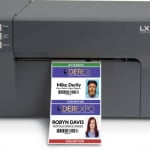
Beating the unique identifiers that printers can add to documents for security purposes is possible: you just need to add extra dots beyond those that security tools already add. The trick is knowing where to add them.
Many printers can add extra dots to help identify which device printed a document, as it’s handy to know that when they fall into the wrong hands. The technique works: it helped to sink NSA leaker Reality Winner, among others, and has also helped in its original purpose of defeating counterfeiters.
But the technique’s potency may be waning, thanks to a quartet of researchers from the Technical University of Dresden.
Timo Richter, Stephan Escher, Dagmar Schönfeld, and Thorsten Strufe reckon they’ve cracked the challenge of knowing how to anonymise printed documents, and presented their work to the Association of Computer Machinery’s 6th ACM Workshop on Information Hiding and Multimedia Security in Innsbruck, Austria last week.
In this paper, the TU Dresden researchers explain that they tested 1,286 documents printed on machines from 18 manufacturers, creating an extraction algorithm to identify well-known dot-patterns – and at the same time, discovering four previously undiscovered patterns coding at 48, 64, 69, and 98 bits.
Identifying new patterns is important, from a privacy point of view, since as the authors points out, an activist in a dictatorship could easily be unmasked by their printer (unless they happen to use a Brother, Samsung, or Tektronix printer, none of which seemed to carry tracking codes, the researchers said).
Compared to working out an automatic extraction of the dot-codes, obfuscating them was relatively easy.
Anybody can take a scan of the document, and clear “empty” areas in an image editor, but the group’s second technique is more sophisticated. After their algorithm identifies the pattern in use, it takes a mask of all possible dot locations in that pattern, and adds extra dots that conform to the layout, but render the code meaningless.
The group has published toolkit that automates the obfuscation workflow, here. ®
[“Source-theregister”]










